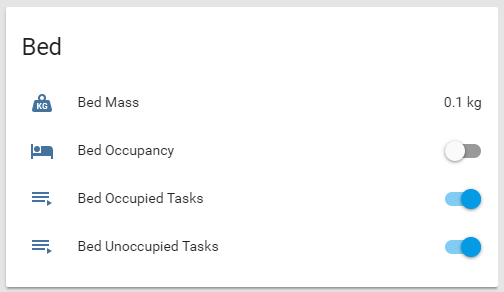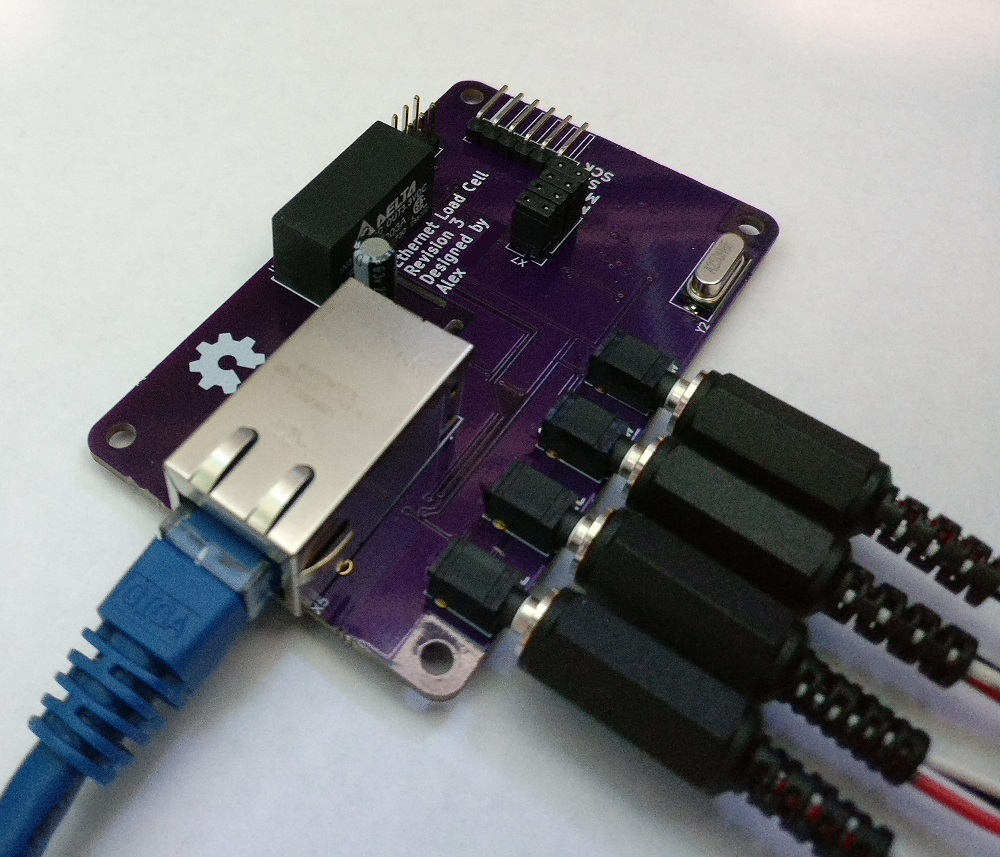This project is a occupancy sensor that uses a load cell for couches and beds, transmitting data to my Home Assistant server via MQTT over Ethernet.
Other bed occupancy sensors that I have used in my home automation setup trigger false negatives when rolling around at night. I use bed occupancy to turn on my lights if I get up at night, and I wanted a faster, more accurate solution.
Wireless home automation devices often make sense only when they are battery powered, if a power cable needs to be run to the device it can carry data too. Designing a low power wireless device is far more complicated than designing a wired device and running an Ethernet cable.
Load cells → HX711 (ADC) → ATMega328P (MCU) → W5100 (Ethernet) → MQTT Broker → Home Assistant
This sensor takes input from 4 load cells, each supporting one leg of a bed or couch. The load cells are sampled with a ATMega328P (Arduino) using an HX711 load cell ADC. These samples are then transmitted to an MQTT broker via the Wiznet W5100 (same as Arduino Ethernet shield).
- LoadCell_ArduinoCode - firmware for the ATMega328P
- LoadCell_Case - 3D printable case designed in OpenSCAD
- LoadCell_Holder - 3D printable holder for the load cells designed in OpenSCAD
- LoadCell_HomeAssistant - example Home Assistant configuration
- LoadCell_KiCAD - schematic and PCB
- ESP8266 Load Cell - wireless edition



